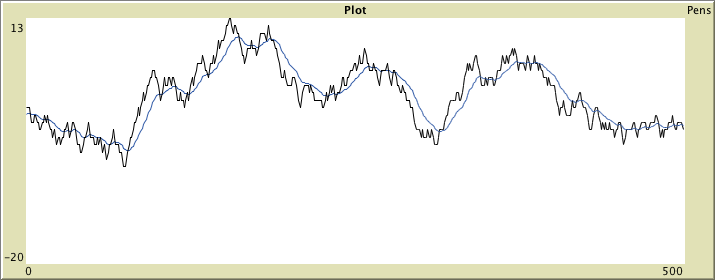

NetLogo is not designed for such batch processing of multiple model runs. For actual research applications, you usually need to explore results from multiple model runs at different settings and initial conditions of the model and perform more sophisticated analyses than plotting the results in a graph. You can turn of the updates of the view, which often speeds up the simulations considerably, but still: running simulations in NetLogo is relatively slow. The graphical visualization of the model maybe instructive while exploring the models, it also slows the simulations down considerably. Although its ease of use may be convenient for researchers who are less familiar with programming themselves and/or don't want to waste their time on the routine operational programming tasks for running a model, it does lack some features for those who need to do more sophisticated analysis. The NetLogo package has been built for educational purposes. You can build your own models from scratch or simply start with a pre-existing sample model and adapt it to your own needs.

Netlogo code install#
You can easily use it online or install NetLogo on your own computer (for improved performance). If you are new to agent-based modeling and need to analyze and build your own models with little programming effort, this is the place to go. NetLogo is probably one of the most accessible packages for getting started with agent-based modeling. In addition, you can construct graphs with arbitrary connections ( links) between the nodes of the graph (the turtles). As such the patches provide a background landscape through which the agents can move around. These three different types of agents allow you to construct hybrid models that include properties of both cellular automata (through the grid of patches) and agents roaming freely through continuous space (the turtles). links are used to establish connections between turtles and allow you to construct a network model.
Netlogo code free#
turtles are free roaming agents that move through space without being confined to a grid,.NetLogo provides three types of agents to work with: A lot of the routine operations to run, control and visualize the model is taken care of by the NetLogo package, so you can focus on programming the logic that is particular to your model.
Netlogo code code#
Moreover, the environment provides access to the programming code of the model itself, written in the Logo language extended to support agent models.

It provides a place for the (sample) models to provide documentation to the user in a consistent manner. You can use its graphical user interface to explore and interact with a huge range of sample models that come with it. Uri Wilensky at the Center for Connected Learning and Computer-Based Modeling (CCL) of NorthWestern University, USA.
Netlogo code software#
NetLogo is a software package that provides a programming environment for exploring, building and publishing agent-based models for use in research and education.


 0 kommentar(er)
0 kommentar(er)
